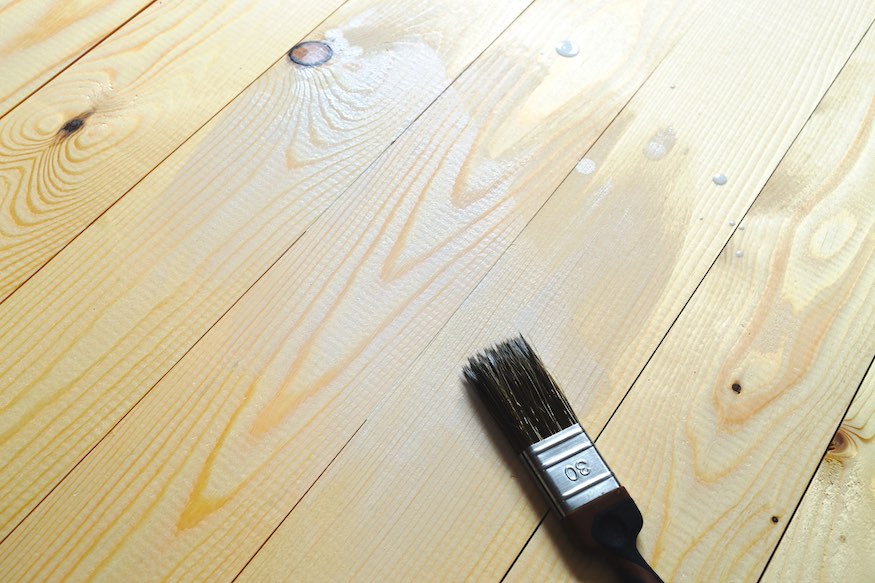Understanding different types of wood finish
There are two general types of finish: penetrating finish and film finish. The penetrating finish is an oil based finish and does not cure hard. If the excess is not wiped off, it can become gummy due to its soft nature. Film finishes cure hard and can be applied and built into any desired thickness. The five common types of film finishes in woodworking are shellac, lacquer, varnish, two-part, and water based. They protect wood better than the penetrating finishes because of their thickness and hardness. The thicker the finish, the better it protects. Keep in mind, there are obviously practical limits to the thickness of any given finish. If applied too thick, it can crack as the wood expands and contracts.
Oil finishes aren’t classified as penetrating finishes just because they penetrate the wood (all finishes penetrate), but are classified as such more so to differentiate between the soft finishes and those that cure hard and can be built up in thickness. There are oils, such as linseed oil, that cure. These oils can be used as finishes. Other oils, such as olive oil, do not cure and cannot be used as finishes. The oils that are used as finishes all possess common characteristics. They cure slowly and soft which – unless the excess is wiped off after each application – can make them impractical as a finish. The also cure to a satin sheen after several coats have been applied; never a gloss. Finally, oils that are used as finishes are not protective like film finishes and cannot be built up into thick, hard layers.
The least protective oil used in penetrating finishes is linseed oil. Raw, it can take a month or more to cure, so driers are added to the oil to act as a catalyst. With the catalyst and when the excess oil is wiped off, linseed oil takes about a day to cure.
Taken from the nuts of the Chinese native Tung tree, tung oil is one of the most water-resistant oils in the woodworking industry, but it is too soft and thin to resist scratching and water vapor exchange. In few coats, tung oil is flat and blotchy. It is only after 5-6 coats that it starts to look nice. Each coat takes several days to cure which makes tung oil a pretty inefficient finish to use.
So, what options are there for a more efficient or durable oil finish?
Polymerized oil is a suitable solution. Cooking linseed or tung oils in an oxygen free environment at 500 degrees causes the oils to crosslink without oxidizing (it is polymerized). It thickens the oils and causes them to cure quickly, hard, and glossy when exposed to oxygen therefore making it possible to build up thickness and durability with each coat.
Varnish is made by cooking an oil with a resin and adding driers to speed up the curing process. Traditionally, linseed or tung oil have been used in varnish, however modern technology has allowed chemists to modify other oils such as soybean oil of safflower oil to be used in varnish. The most protective and durable of commonly used finishes, varnish is inexpensive and resists water vapor exchange, heat, solvents, wear, acids, and alkalis.

Choosing a finish for your next woodworking project
With all the options available, how do you choose a finish? There are four aspects to keep in mind here: ease of application, durability, protection, and color. Oils, and oil-varnish blends are very easy to apply. They dry slowly, so there is a lot of time to apply these finishes. Varnish cures significantly faster which increases the application difficulty. Varnish or polymerized finishes can be built in thick layers, thus providing more protection to the wood than oil options. If oil is the only option, tung oil provides more protection than linseed oil. Varnish and polymerized oil hold up better to years of use and abuse than any straight oil option.
Just as some finishes protect better than others, some finishes yellow more than others. In searching for a warmer feel to a project, sometimes adding a yellowish hue is important. For these projects, the straight oils provide more yellowing than polymerized oil and varnish. Varnish typically adds the least amount of color.
Stay tuned for more woodworking tips, tricks, jigs, and techniques coming soon. In the meantime, view some of our recent work in our gallery.